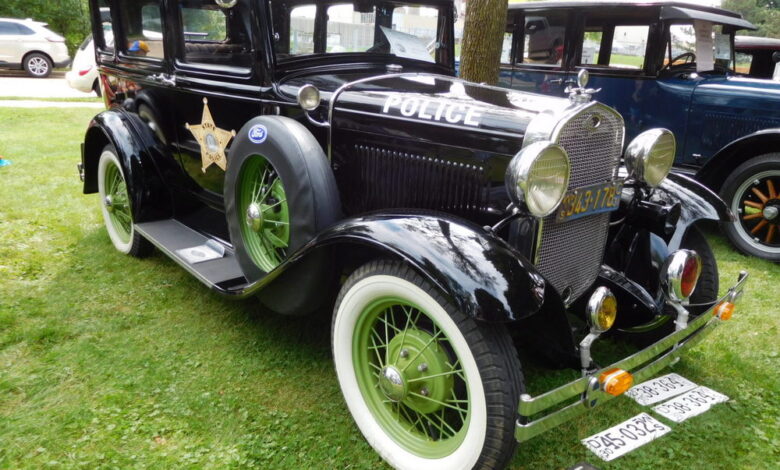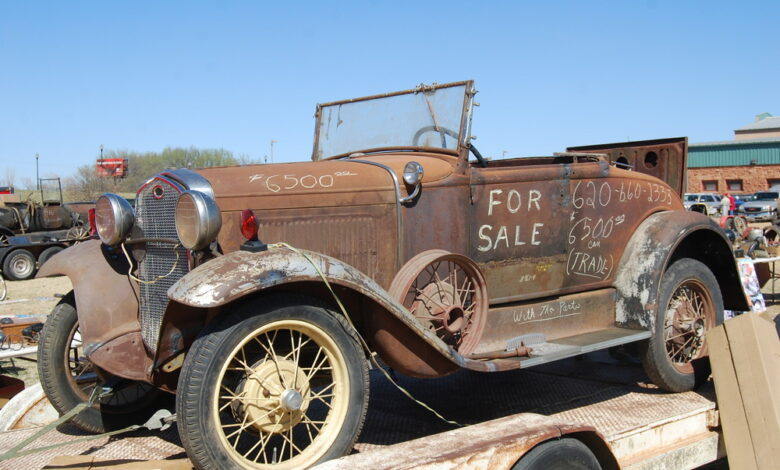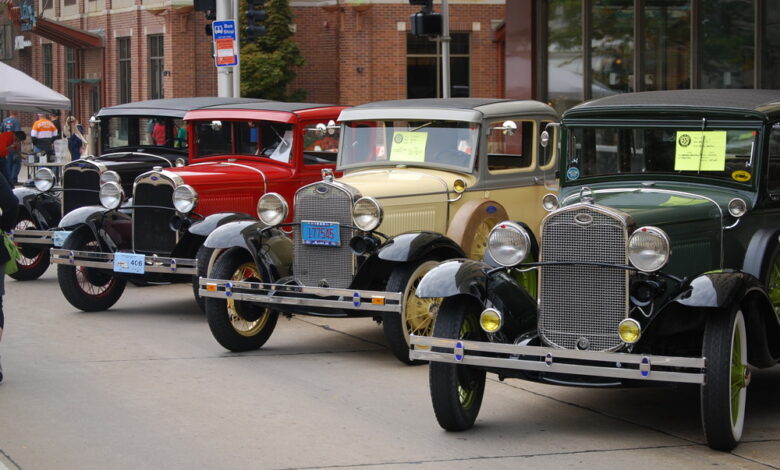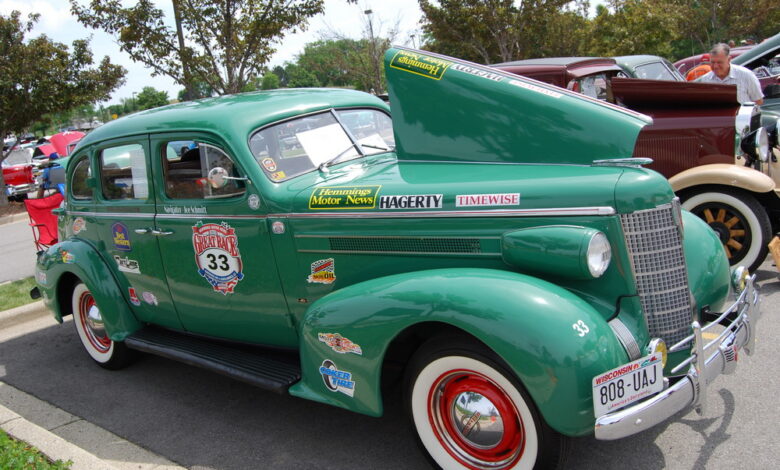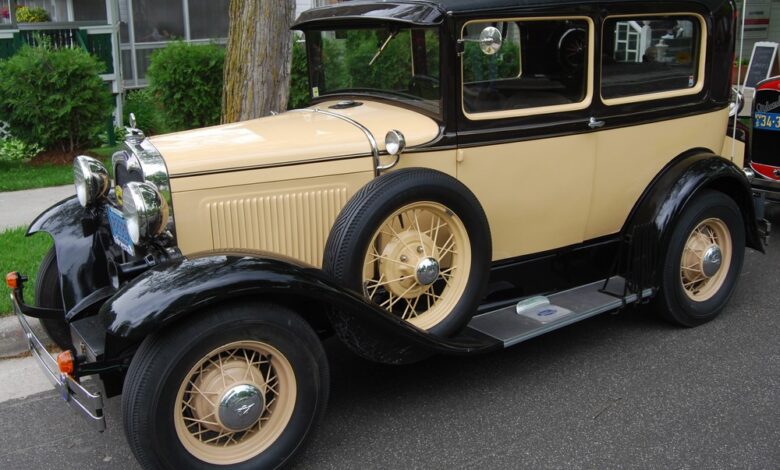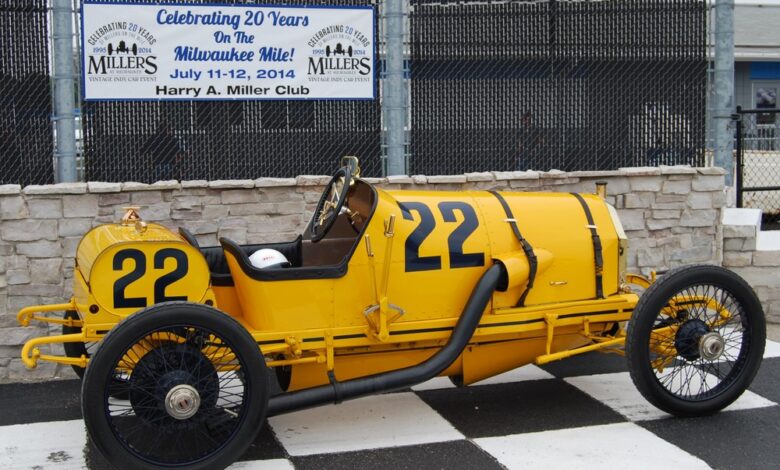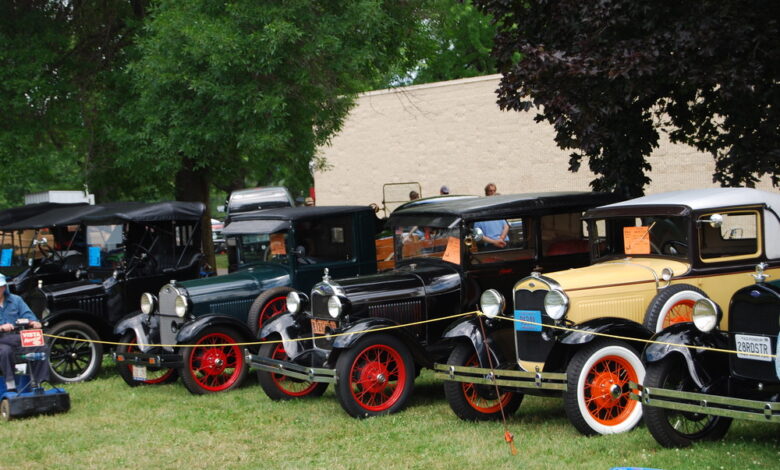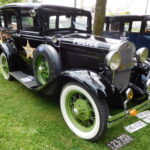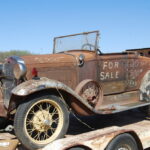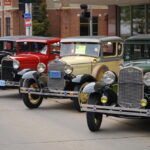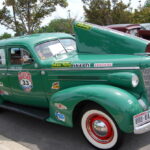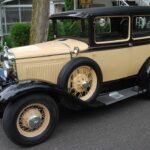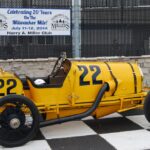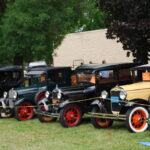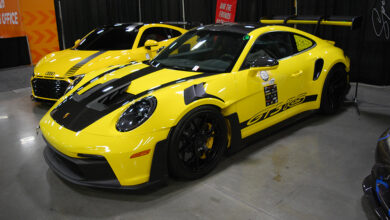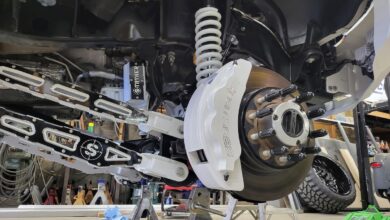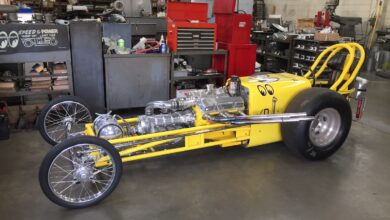Living Legends: Pre-War Projects On the Rise
Will your shop see more of these cars as prices drop?
This article originally appeared in the April 2023 issue of THE SHOP.
We recently bought an original 1927 Oakland for $9,500—that was $6,500 more than we paid for a 1917 Oakland in the fall of 2016.
Our “new” car had its original paint and upholstery and 28,000 original miles. It also came to us with 14 trophies in the backseat that the previous owner had won for originality.
What else could a collector want—a rarely seen model at an affordable price with some interesting features and history?
In 2017, our first Oakland gave us a bucket list adventure that will last a lifetime. The car was a century old that year, as were Lions International and the Wisconsin State Capitol. So, a friend that taught automotive technology and belonged to the Lions Club suggested we tie in with the local Lions to do a fundraising tour for charity. At the time we also owned a 100-plus-year-old auto shop that had been a Yellowstone Trail garage.
The concept was that we would drive the Oakland touring car—that we bought for $3,000—over the 400-mile-long Wisconsin section of the Yellowstone Trail. Local Lions Clubs provided lunches and dinners and we paid other expenses.
The Lions Clubs made donations to a Lions Summer Camp for blind children in Rosholt, Wisconsin for each mile we traveled. The tour across the Badger State took a week and raised $8,500.
For us, the monetary aspects paled in comparison to the adventure of driving across the state at 45 mph in a 100-year-old automobile. To add icing to the cake, we discovered that the capitol building in Madison was also turning 100 and that a Centennial Gala was planned. After a call to our state representative, we wrangled an invitation to display the Oakland that toured the Yellowstone Trail outside the Capitol.
We discovered that old cars made from the early 1900s to 1940s can be as much fun as driving a gasser down a dragstrip or rallying in a vintage MG. We all have a little bit of Walter Mitty in us, and vintage and pre-war cars help let it out.
They can be a conduit to some once-in-a-lifetime experiences. For instance, although we’ve never had a real “show car,” we have had antique autos used in a movie called “Next Stop Greenwich Village,” featured in a full-page ad in the “New York Times Fashion Magazine,” copied for a precision scale model car made by Brooklin Models of England, placed as the centerpiece of a “WWII Homefront” exhibit at the Manitowoc Maritime Museum and commemorated on a car show dash plaque.
But this story isn’t only a tale about our cars. It’s a suggestion to specialty car shops that older collector cars are making a comeback.
A PLACE IN HISTORY
As prices of cars made through the World War II era continue to fall, more and more collectors are eyeing such models as a way to enjoy the hobby without breaking the bank.
The day before we wrote this, Vanderbrink Auctions held the Dick Pellows Collection auction in St. Paul, Minnesota. Affordable prices realized on fairly nice, complete cars included:
- $20,000 for a 1908 Buick Model 10
- $15,500 for a 1911 Krit Model A roadster
- $7,500 for a 1922 Ford Model T roadster
- $10,500 for a 1925 Ford Model T
- $7,000 for a 1925 Studebaker
- $8,000 for a 1937 Studebaker Dictator
- $12,000 for a 1938 Packard 120 coupe
- $10,250 for a 1930 air-cooled Franklin
- $7,000 for a 1934 Ford pickup
Sold for even lower prices were some pre-WWII cars that needed a trip to a restoration shop.
The earliest antique auto events were called “derbies” and the first ones were held in the Philadelphia area in the mid-1930s. There was a bit more collecting activity in the 1940s, but it took until the 1950s for the hobby to really grow.
At that point, the majority of collector cars were Model T and Model A Fords. There was a basic rule that an “antique” car had to be at least 25 years old, which would have been a 1925 model in 1950 or a 1935 Model in 1960.
Back then, very few people thought of 1950s cars as collectibles.
Even in 1970, a 25-year-old car (1945) seemed “old” compared to new cars of that era. It was in the mid- to late-1970s that a big shift toward collecting post-WWII cars began. You could buy a car like a 1957 Chevrolet Bel Air convertible, in top condition, for about $20,000. Today, my “Collector Car Prices” book says that Bel Air is worth $96,500, and 75% more than that if it has fuel injection.
(A quick internet search shows American Collectors Community defines “vintage” cars as those manufactured between 1919-30; “antique” cars as vehicles 45 years old or older; and “classic” cars as those 20 years old or older. “Pre-war” vehicles are generally defined as having been built between 1930-46.)
As we know, an older car made anytime between 1900-1940 won’t go as fast as a ’57 Chevy, but it might cost 1/10th as much. In fact, the difference is about $89,000, and that’s pretty significant.
Someone has to give Studebakers, Packards and Oaklands some attention, and more and more people are finding things to love about early automobiles when they cost much less than a mid-century Chevrolet (even if the fins on a ’57 look great!)
We can’t help thinking that such price differences are going to inspire people to buy more pre-war cars. Logic says that, if this happens, more older cars will be brought to professional shops like yours for repairs.
SHOPPING LIST
Most shops can easily work on cars of this vintage. Finding parts can sometimes be a problem, but the vehicles themselves have simple designs and very basic engineering.
Old parts were also quite robust and often can be repaired.
The International Pre-War Swap Meet held in Chickasha, Oklahoma is a great place to find parts for older cars. The annual event stems from the efforts of Joe, Mike, Susie and Ryan Ersland. Joe collected antique cars for more than 60 years and started the Chickasha Antique Auto Club. In fact, the club’s first meeting was held in his living room.
If your shop will be working on older cars, you will need more than parts to repair them. Getting information about the car’s mechanical functions will be important, too. There’s always that strange-looking shock absorber or odd carburetor setting that you’ll never be able to make new again without having the proper old factory shop manual.
While you may think the chances of finding an 80- or 90-year-old manual are close to nil, organizations such as the Automotive Research Library of the Horseless Carriage Foundation can often provide copies of pages from manuals that they have digitized.
The core collection of the library consists of materials scanned from automotive publications, starting with 1895 editions. Scanned materials represent more than 2.4 million pages and the scans are available online for a fee.
Other sources of similar information include the AACA (Antique Automobile Club of America) Library & Research Center and the Simeone Foundation Museum in Philadelphia. In addition, many car museums and car clubs that focus on a single brand or type of vehicle have their own libraries that can be found through an online search.
UNIQUE DESIGNS
A fascinating aspect of collecting cars made earlier than 1940 or so is the amazing diversity of designs and technologies. More than 5,500 different types of cars have been manufactured and were cataloged by automotive historian Beverly Rae Kimes in “The Standard Catalog of American Cars 1805-1942.”
Contrast that to 2021 when, according to Google, “the bulk of the world’s car manufacturing is handled by 60 different automakers that are owned by 14 massive global companies.” Google says that if you consider local automakers within various countries around the world and other smaller companies, there could be as many as 2,000 carmakers globally—still a lot fewer than Kimes documented.
Within those original 5,500 carmakers, you’ll find companies that built electric, steam, gas and air-powered vehicles. You’ll find cars with one-, two-, three-, four-, five-, six-, eight-, 10-, 12- and 16-cylinder engines. There will be models with two- and four-wheel brakes, not to mention mechanical brakes and “juice” brakes. You’ll find cars with drum brakes and disc brakes, manual brakes, power brakes and anti-lock brakes. There will be L-head, F-head and overhead-valve engines and all kinds of different transmissions, from rope drive to magnetic drive.
Automakers have been very creative.
Years ago, when you attended a car show there would be antique car owners showing off what made their cars special. On some early overhead-valve cars that had no valve covers, you could watch the mechanisms move and hear them click when people started their antique engines.
Meanwhile, steam cars would hiss as they moved swiftly across the show fields, electric cars would do so in silence, and Model T Fords would putt-putt-putt their way up to the reviewing stand to pick up a trophy for Best in Class.
There’s nothing wrong with the ’50s tailfins, ’60s styling and ’70s muscle car engines that you see at shows today, but it’s sad how many events draw zero cars made prior to World War II. Automobiles have been around for at least 135 years (216 if you use Kimes’ dating), but you wouldn’t know it if you attended some modern shows.
We predict the forces of economics are going to change this, however. As older collector cars get more affordable and prices on newer ones soar out of sight, there’s certain to be a revival of interest in the “flivvers” and Tin Lizzies that got the ball rolling.
Your shop can be ahead of the curve by promoting your ability to work on such vehicles. Start developing a network of parts and information sources you can count on to help you as more pre-war cars show up at your door.
When you go to a swap meet or flea market, look for tools and equipment sold years ago to fix certain vehicles, especially Model T and Model A Fords. Right now, you can buy them cheap because there hasn’t been high demand, but it looks like the pendulum is going to be swinging back soon.
Familiarize yourself with the car clubs organized to help owners of old cars collect and restore them. You can visit Old Cars Weekly to access and download one of the largest directories of car clubs that’s ever been compiled.
You may find the old-car revival to be fascinating and exciting. Working on a car (or truck) that’s 80 to 125 years old makes you a historian, as well as a restorer.
Many craftsmen feel that strong link with the past as they bring a pile of metal back to life. Those horseless carriages can really stir your soul!
